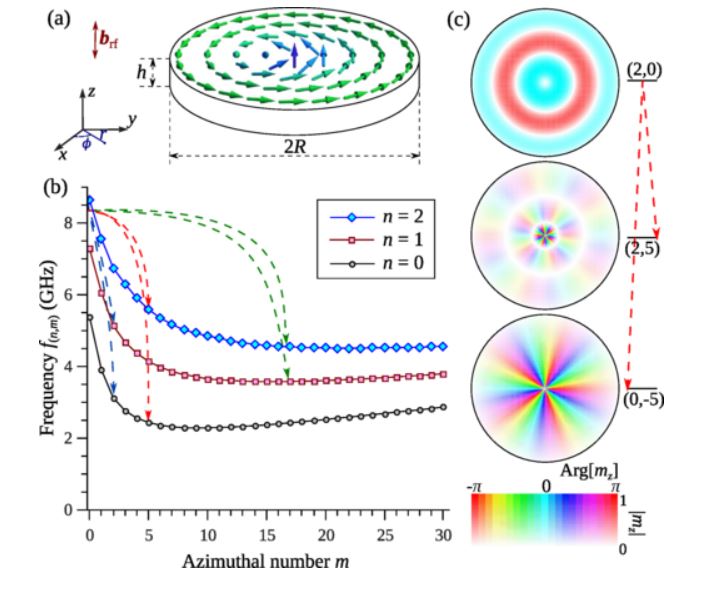
We use vector Hamiltonian formalism (VHF) to study theoretically three-magnon parametric interaction (or three-wave splitting) in a magnetic disk existing in a magnetic vortex ground state. The three-wave splitting in a disk is found to obey two selection rules: (i) conservation of the total azimuthal number of the interacting spin-wave modes, and (ii) inequality of the radial numbers of the resultant modes, if the directly excited original mode is radially symmetric (i.e., if the azimuthal number of the directly excited mode is m = 0). The selection rule (ii), however, is relaxed in sufficiently small magnetic disks, due to the influence of the vortex core. We also found that the efficiency of the three-wave splitting of the directly excited mode strongly depends on the azimuthal and radial mode numbers of the resultant modes. This property becomes qualitatively important in the case when several different splitting channels (several pairs of resultant modes) approximately satisfy the resonance condition for the splitting. The good agreement of the VHF analytic calculations with the experiment and micromagnetic simulations proves the capability of the VHF formalism to predict the actual experimentally realized splitting channels, and the magnitude of the driving field thresholds for the three-wave splitting. This work has been published in PRB and can be accessed here.
